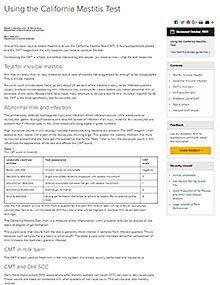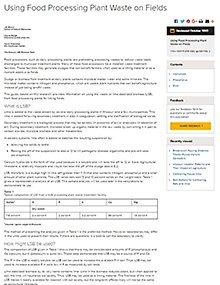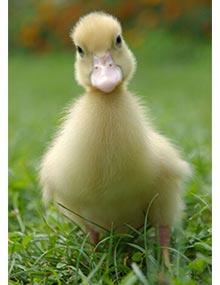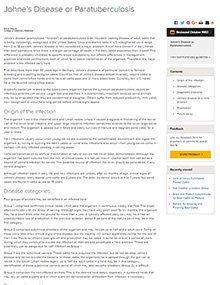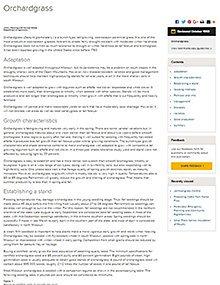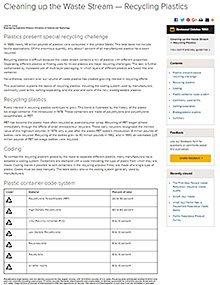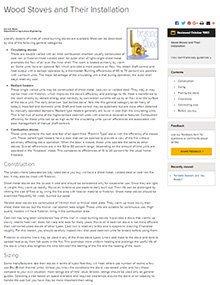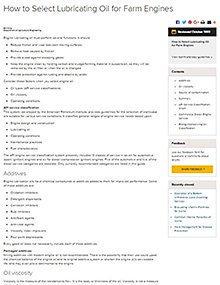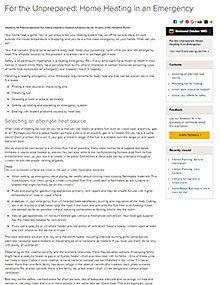Estimating Peak Rates of Runoff From Small Watersheds
Reviewed
Use the following equation to estimate the peak rates of runoff to be expected from watersheds smaller than 200 acres in Missouri:
Q = QT x L x I x T x S x V x C x P x F where
Q = Peak rate of runoff, cubic feet per second.
Using the California Mastitis Test
Reviewed
One of the best ways to detect mastitis is by using the California Mastitis Test. Visit our website today to learn more.
White, Ladino and Sweet Clover
Reviewed
White and ladino cloverWhite clover is a stoloniferous plant with a shallow root system. The primary stems of white clover usually die before the second year, and the life of the plant depends upon the stolons and their haphazard roots.
Drilled Soybeans in Missouri
Reviewed
Tall Fescue
Reviewed
Tall Fescue is one of the more drought-resistant field plants grown in Missouri. Visit our website today to learn more.
Intermediate Trail Riding
Reviewed
More and more families are having fun trail riding. This activity is reasonably inexpensive, is non-competitive, and affords relaxation on nature's scenic trails.
Culverts and Flood Gates
Reviewed
The tables in this publication may be used to find culvert and flood gate size for bottomland drainage up to 640 acres.
A formula frequently used for calculating drainage flow rates of cultivated areas from one to one hundred square miles area in the Midwest is:
Using Food Processing Plant Waste on Fields
Reviewed
Waste, or lime stabilized biomass (LSB), from food processing plants can be used for liming fields. Learn what LSB is, how it can be used, and the soil benefits it provides in this University of Missouri Extension guide.
Renovating Grass Sods With Legumes
Reviewed
Many Missouri pastures have adequate grass stands, but they need legumes. If the soil is capable of growing them, legumes should be established in grass sods. Establishing clovers is cheaper than topdressing the grass with nitrogen.
Growth Stimulants (Implants)
Reviewed
Implants increase the weaning weight of suckling calves and increase the rate and efficiency of gain of cattle fed growing and finishing rations.
Growth stimulants implanted beneath the skin in the middle third of the backside of the ear include Compudose, Ralgro, Synovex, STEER-oid, HEIFER-oid and Finaplex-S.
Cotton Insects and Mites
Reviewed
Editor's note
Brooding and Rearing Ducklings and Goslings
Reviewed
Goslings and ducklings can be brooded by broody chicken hens and most breeds of ducks and geese. Learn about brooder types, temperature, housing, feeding, watering, pasturing and fencing in this University of Missouri Extension guide.
Johne’s Disease or Paratuberculosis
Reviewed
Orchardgrass
Reviewed
Orchardgrass is a productive cool-season grass that responds to good fertility and management practices by producing up to 4 tons of high quality forage per acre. Learn how to establish and manage a stand of orchardgrass in this MU Extension guide.
Wood Stoves and Their Installation
Reviewed
How to Select Lubricating Oil for Farm Engines
Reviewed
Engine lubricating oil must perform several functions. It should:
Missouri Limestone Quality: What Is ENM?
Reviewed
Can you get a ton's worth of agricultural limestone out of a ton of agricultural limestone? Probably not. The effectiveness of agricultural limestone depends on two factors:

Portable Ladder Safety
Reviewed
Portable ladders are one of the handiest, simplest tools we use. Because of their effectiveness, ladders are used by many different people to perform many different tasks. Although ladders are very uncomplicated, planning and care are still required to use them safely.
Alfalfa
Reviewed
Alfalfa is the most productive legume for Missouri. Visit our website today to learn more about Alfalfa.
Recommendations for Aging Beef
Reviewed
The main reason for aging beef is to improve the tenderness and the flavor of the meat. Visit our site for recommendations for aging beef.
For the Unprepared: Home Heating in an Emergency
Reviewed
Your home heat is gone. You've just discovered your heating system may be off for several days. It's cold outside; the inside temperature is dropping, and you have a first class emergency on your hands. What can you do?
Safe Use, Storage and Disposal of Paint
Reviewed
Paint is a product that most of us have that can become a hazardous waste. Visit our site for our resource on the Safe Use, Storage and Disposal of Paint.

